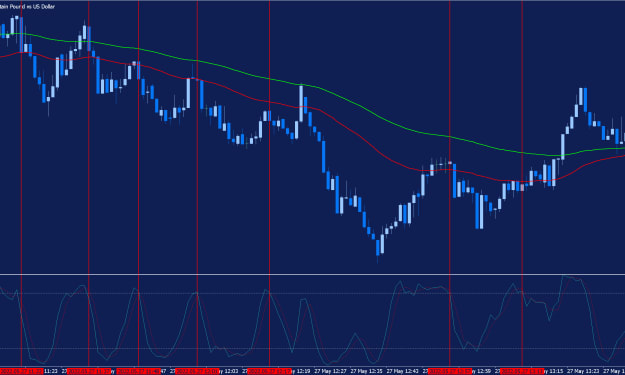
Numerous strategies and indicators can help investors make appropriate decisions when investing in the stock market. One such indicator that has gained significant popularity is stock volume. Blackbear-ecapital specialises in analysing stock volume and providing valuable insights to traders and investors. This comprehensive Blackbear-ecapital.com reviews unlocks the power of stock volume and helps you make smarter investment decisions.
1. Understanding Stock Volume
Before delving into the benefits of stock volume analysis, it is essential to understand what volume represents and how it is calculated. Volume refers to the total number of shares bought and sold during a given period, typically within a day. It is generally displayed as a vertical bar chart at the bottom of a price chart.
Volume is a metric that quantifies market activity and signifies the involvement of both buyers and sellers in a specific stock. High volume indicates a high level of interest and activity, while low volume suggests a lack of interest and potential price stagnation. By analysing volume patterns, traders can identify trends, confirm price movements, and spot possible reversals.
2. Confirmation of Price Movements
Stock volume can act as a confirming indicator for price movements. Increasing volume during upward price movements validates the trend's strength in an uptrend. It suggests significant buying pressure and reinforces the likelihood of further price appreciation. On the other hand, decreasing volume during upward price movements may indicate a weakening trend, signalling a potential reversal or consolidation.
Similarly, in a downtrend, increasing volume during downward price movements confirms the trend's strength. It implies significant selling pressure and increases the likelihood of further price depreciation. Conversely, decreasing volume during downward price movements may indicate a weakening trend, suggesting a potential reversal or consolidation.
By analysing volume alongside price movements, traders can enhance their trading decisions and steer clear of misleading signals, thereby building their confidence. It provides a more comprehensive view of market dynamics and helps traders navigate volatile market conditions.
3. Spotting Potential Reversals
One of the most valuable applications of stock volume is its ability to identify potential reversals in price trends. When a stock nears a significant support or resistance level, analysing volume can provide crucial insights into the likelihood of a relapse.
In an uptrend, if volume starts to decrease as the price approaches a resistance level, it may indicate a lack of buying interest and potential exhaustion of the trend. Conversely, if volume increases as the price approaches a support level during a downtrend, it may suggest a possible reversal and renewed buying interest.
Volume can also reveal the presence of institutional investors and market participants with substantial buying or selling power. By paying attention to unusual spikes in volume, traders can identify potential market manipulation or significant shifts in sentiment, allowing them to take advantage of emerging opportunities or protect themselves from sudden price movements.
4. Identifying Breakouts and Breakdowns
Volume analysis is also instrumental in identifying breakouts and breakdowns in stock prices. Breakouts occur when a stock price moves above a significant resistance level, signalling a potential upward trend. On the other hand, breakdowns happen when a stock price moves below an important support level, indicating a possible downward trend.
Analysing volume during breakout or breakdown situations is crucial for confirmation. A breakout with high volume suggests strong buying interest and increases the likelihood of a sustained upward trend. Similarly, a breakdown with high volume confirms significant selling pressure and enhances the probability of a continued downward trend.
By combining price patterns, support and resistance levels, and volume analysis, traders can better understand market dynamics and increase their chances of profiting from breakouts and breakdowns.
5. Distinguishing Between Noise and True Signals
In the fast-paced and often unpredictable stock market, distinguishing between noise and true signals is paramount. Price movements accompanied by a low volume are often considered noise and may not significantly impact the overall trend. Conversely, price movements accompanied by high volume are more likely to be true signals and carry more weight regarding market sentiment and future price movements.
By analysing volume alongside price patterns, traders can filter out the noise and focus on the true signals. This helps them avoid false breakouts, reversals, and misleading market movements. It enables traders to make more accurate predictions and improve their overall trading performance.
Conclusion
Stock volume is a powerful tool that can significantly enhance your trading strategies and decision-making process. By understanding and analysing volume patterns, traders can confirm price movements, spot potential reversals, identify breakouts and breakdowns, and filter out noise from true signals. Incorporating volume analysis into your trading arsenal can provide a competitive edge and improve your chances of success in the stock market. Unlock the power of stock volume and take your trading to the next level.
Disclaimer: This article is not intended to be a recommendation. The author is not responsible for any resulting actions of the company during your trading experience. The information provided in this article may not be accurate or up-to-date. Any trading or financial decision you make is your sole responsibility, and you must not rely on any information provided here. We do not provide any warranties regarding the information on this website and are not responsible for any losses or damages incurred as a result of trading or investing.





Comments
Jane Ali is not accepting comments at the moment
Want to show your support? Send them a one-off tip.